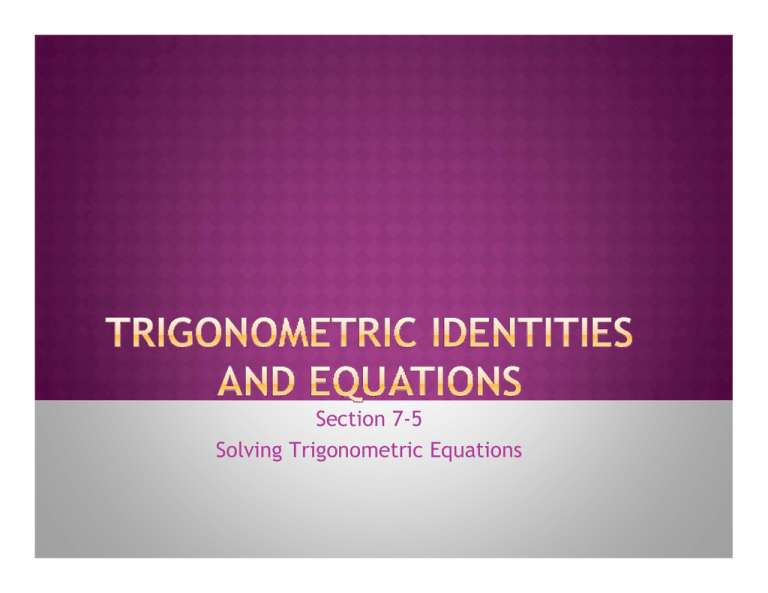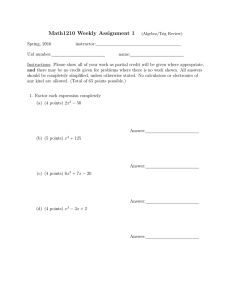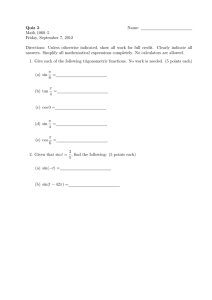Section 7-5 Solving Trigonometric Equations
advertisement

Section 7-5 Solving Trigonometric Equations So far we have been studying a special type of trigonometric equation called an identity. Trigonometric identities are equations that are true for ALL values of the variable for which both sides are defined. Now we will look at trigonometric equations that are true for only certain values of the variable. Solving these equations resembles solving algebraic equations. Most trigonometric equations have more than one solution. If the variable is not restricted, the periodic nature of trigonometric functions will result in an infinite number of solutions. If the variable is restricted to two adjacent quadrants, a trigonometric equation will have fewer solutions. These solutions are called principal values. For sin x and tan x, the principal values are in Quadrant and IV. So x is in the interval -90 ≤x ≤ 90. For cos x, the principal values are in Quadrant I and II, so x is in the interval 0 ≤ x ≤ 180. Solve 2 sin2 x + sin x -1 = 0 Factor: (2 sin x – 1) (sin x + 1) = 0 So 2 sin x – 1 = 0 or sin x + 1 = 0 sin x = ½ or sin x = -1 x = 30 degrees or x = 270 degrees If an equation cannot be solved easily by factoring, try writing the expressions in terms of only one trigonometric function. Use your knowledge of identities. Solve sin2 x - sin x +1 = cos2 x for 0 ≤ x ≤ 360 We can write this in terms of sin x only. We use the Pythagorean identity 1 - sin2 x = cos2 x 2x 2x sin sin So we re-write the equation as - sin x + 1 = 1 2 sin2 x - sin x = 0 So sin x = 0 or sin x = ½ sin x ( 2 sin x -1 ) = 0 So x = 0, 180, 30, 150 degrees Section 7-5 Pp. 459-461 # 17-28 all, 31, 35, 62, 71




